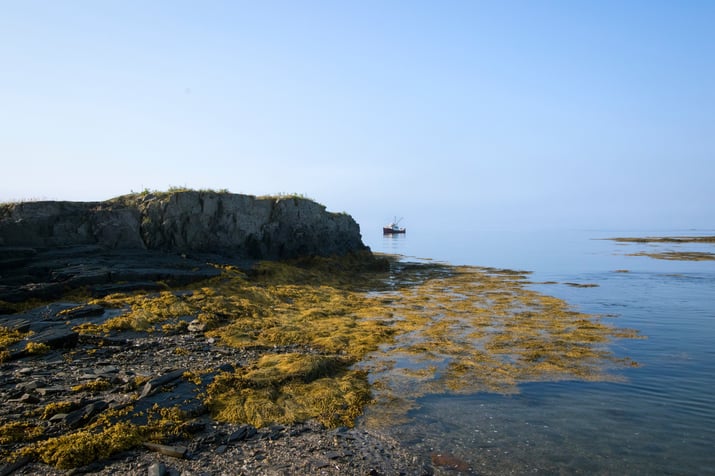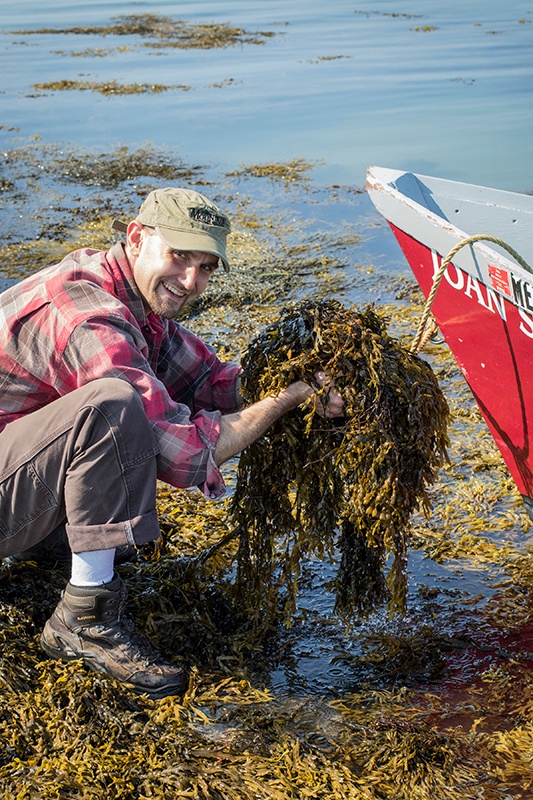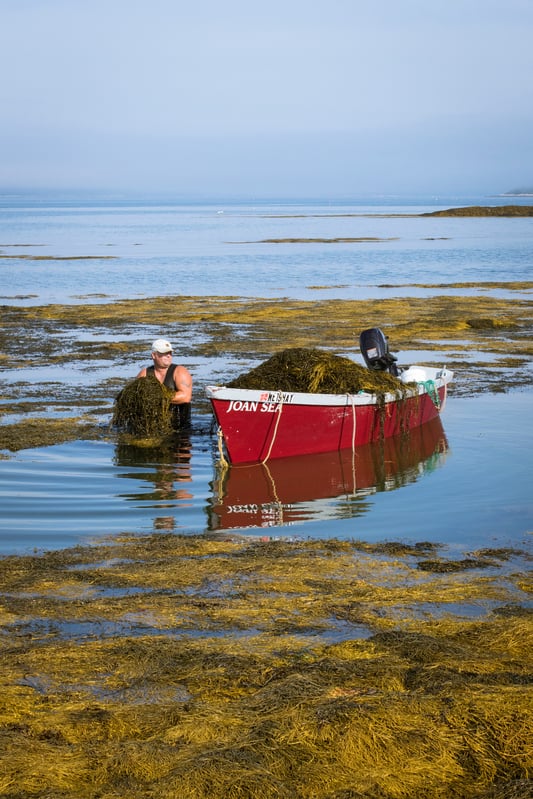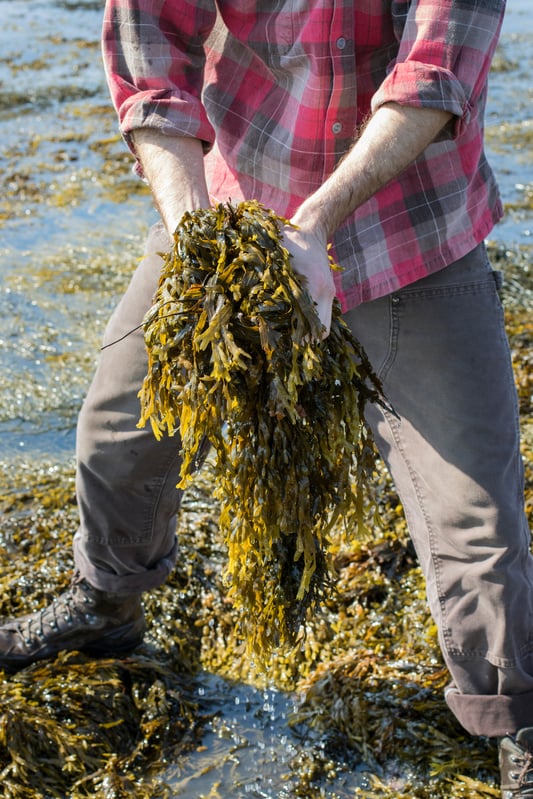Seaweeds, also known as “sea vegetables,” are widely prized for their rich supply of minerals and their unique umami-packed flavor. Bladderwrack, dulse, and nori are some of the healthful certified organic seaweeds that thrive off the beautiful coast of Maine's Atlantic waters. I took a trip across the country to visit with our skilled harvesters who devote their life to these flavorful ocean treasures.
A Day in the Life of a Seaweed Harvester
Before sunrise, I met up with one of our seaweed harvesters on the salty docks of the Atlantic for a day of collecting fresh bladderwrack. I was greeted by an alluring fog and the bustling atmosphere of maritime culture. Our harvester, Tom, greeted me with a warm welcome and some freshly baked donuts to keep me satiated for the grueling day aboard the harvesting vessel.
What is Bladderwrack?
Bladderwrack, also known as “red focus” or “rock wrack,” is one of the more common types of kelp found in our oceans. You may recognize it by its gel-filled thalli (a.k.a. “bladders”) that keep it afloat in the water. It prefers to grow in protected shorelines, where the tide doesn’t vary too much. This widely used seaweed was the original source of iodine discovered in the early 1800s by French chemist Bernard Courtois. Bladderwrack is slightly salty with a fishy taste.

Preparing for a Day at Sea
Once aboard, I watched as the small crew jumped right into their routine, preparing for a day of hard work. As the fog slowly lifted, the first few rays of early morning sun peeked through, illuminating fishing boats and nearby islands. I soaked up the beauty of the morning as Tom, a veteran commercial fisherman, steered the boat. It seemed as if he had spent more time on the open seas than on the land. His love for the ocean and its delicious sea vegetables was evident in his words and his good nature.
Upon arriving at an uninhabited island, we prepared for the second phase of the morning’s work, harvesting our organic bladderwrack. The three-person crew wasted no time readying the small ocean-going boats that were towed behind in a larger vessel. We boarded the smaller, net-lined boats and carefully navigated through the rock shelves that are home to plentiful patches of pristine bladderwrack.
Hand-Harvesting Seaweed
Bladderwrack’s harvest season typically starts as early as March and ends as late as October. The crew, dressed in their wetsuits for added comfort, waded in the chilly waters to seek out the best bladderwrack. They can tell by looking at the thalli, which become nice and plump when it has reached its peak.
They took the time to carefully hand-harvest the fresh seaweed, loading up the nets to be hauled back to the larger boat. Once the nets were nice and full, they return to the boat to load the main vessel’s deck with fresh, vibrant bladderwrack. With a deck full of seaweed, we started our journey back to the docks. The crew took the trip back to shore as an opportunity to rest. They settled onto the bow with warm blankets to recover from a long day of physical labor in an unforgiving yet beautiful work environment.
Once we made it back to the docks, they summoned up the rest of their energy to unload the seaweed to be hauled off in a truck to be dried. After drying in the sun for a few days, it's milled at the main warehouse before being shipped to our facility.
Availability of Organic Seaweed
While bladderwrack and dulse are fairly abundant, seaweeds like nori, wakame, and sea lettuce are a bit harder to find. The availability of certified organic seaweed is even slimmer. When we’re able to harvest a decent amount of these seaweeds, they still need to make it through our on-site lab, where they are tested for quality and purity before they can be available for purchase. Depending on the season, it can be difficult to find large quantities of premium seaweed, and we refuse to sacrifice quality for quantity.
Seaweed: A Culinary Delight
These cold Atlantic waters are home to a myriad of edible and nourishing seaweeds, many of which are included in our line of certified organic seaweeds. Dried seaweed is ideal for adding a strong umami flavor to stocks and other culinary creations. Try putting dulse flakes in your homemade herbal infused butter, or sprinkle some freshly ground nori flakes on top of a bowl of popcorn. Seaweed is useful beyond the kitchen too, taking your next DIY face mask or body scrub to the next level.
Looking for a seaweed-inspired recipe?
You may also be interested in:















